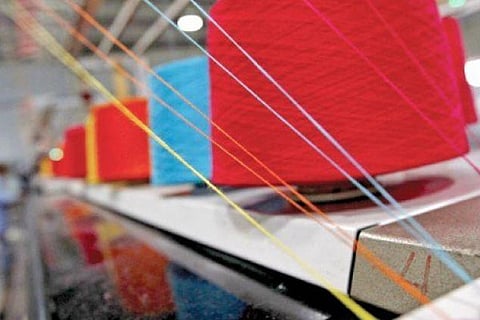

Chennai
There’s a new trend among popular fashion brands: “eco friendly” collections. Organic cotton is everywhere this summer, but is the label just a marketing strategy? Viola Wohlgemuth, a textiles expert at Greenpeace says companies create their sustainability labels and criteria themselves. “Sustainability is not a protected or specific term, which leaves the door wide open for so-called green-washing,” she said.
Independent certifications
Both experts emphasize that independent environmental certifications offer a better indicator of a product’s eco credentials, including labor conditions for workers involved in production. Examples include the Global Organic Textile Standard label (GOTS) and the IVN Best certification, which is awarded by the International Association of Natural Textile Industry (IVN). Heike Hess, head of IVN’s Berlin branch, says using organic cotton alone “is not enough to make fashion really sustainable,” and producing clothes involves a more involved production chain. After being grown in the fields, cotton fibers have to be separated from their seeds, spun, dyed, printed and sewn to create finished items of clothing.
“Ecological and social standards are important at every stage of production,” Hess said. “That includes minimizing the use of harmful chemicals, managing water usage and waste, limiting CO2 emissions and ensuring human rights, fair wages, protections for workers and much more. Only then can fashion really be called sustainable.” And that comes at a price. Organic cotton summer dresses certified with the GOTS label usually cost somewhere between 60-100 euros.
Water polluted and wasted
Textile production often uses harmful chemicals, especially during the wet processing stage when threads are formed, dyed and woven, says Wohlgemuth. According to the UN Environment Programme, around 20 % of global wastewater is generated during textile dyeing and processing. Communities and ecosystems in textile producing countries across Asia are worst affected. Since launching its ‘Detox My Fashion’ campaign in 2011, Greenpeace has secured commitments from some 80 global companies in the fashion industry to eliminate hazardous chemicals by the end of this year. But that alone doesn’t imply sustainability. Growing cotton also requires a huge amount of water and vast areas of land, says Sabine Ferenschild from the Sudwind Institute for Economics and Ecumenism in Bonn.
“Organic cotton is only sustainable when grown in rainy regions such as India, and planted in combination with food crops rather than in competition with them,” she said. “But we have seen that cotton farming is increasingly being shifted to desert regions. That can never be sustainable.”
Eco collections remain a market niche
Ferenschild is critical of major fashion brands’ attempts to go green with their own criteria and labelling for certain products, while the majority of what they’re selling is still produced conventionally.
Germany is pursuing a new approach to green certification with its government-backed ‘Green Button’ label. A company can only use the label if all its products comply with high environmental and labour standards.
— This article has been provided by Deutsche Welle
Visit news.dtnext.in to explore our interactive epaper!
Download the DT Next app for more exciting features!
Click here for iOS
Click here for Android